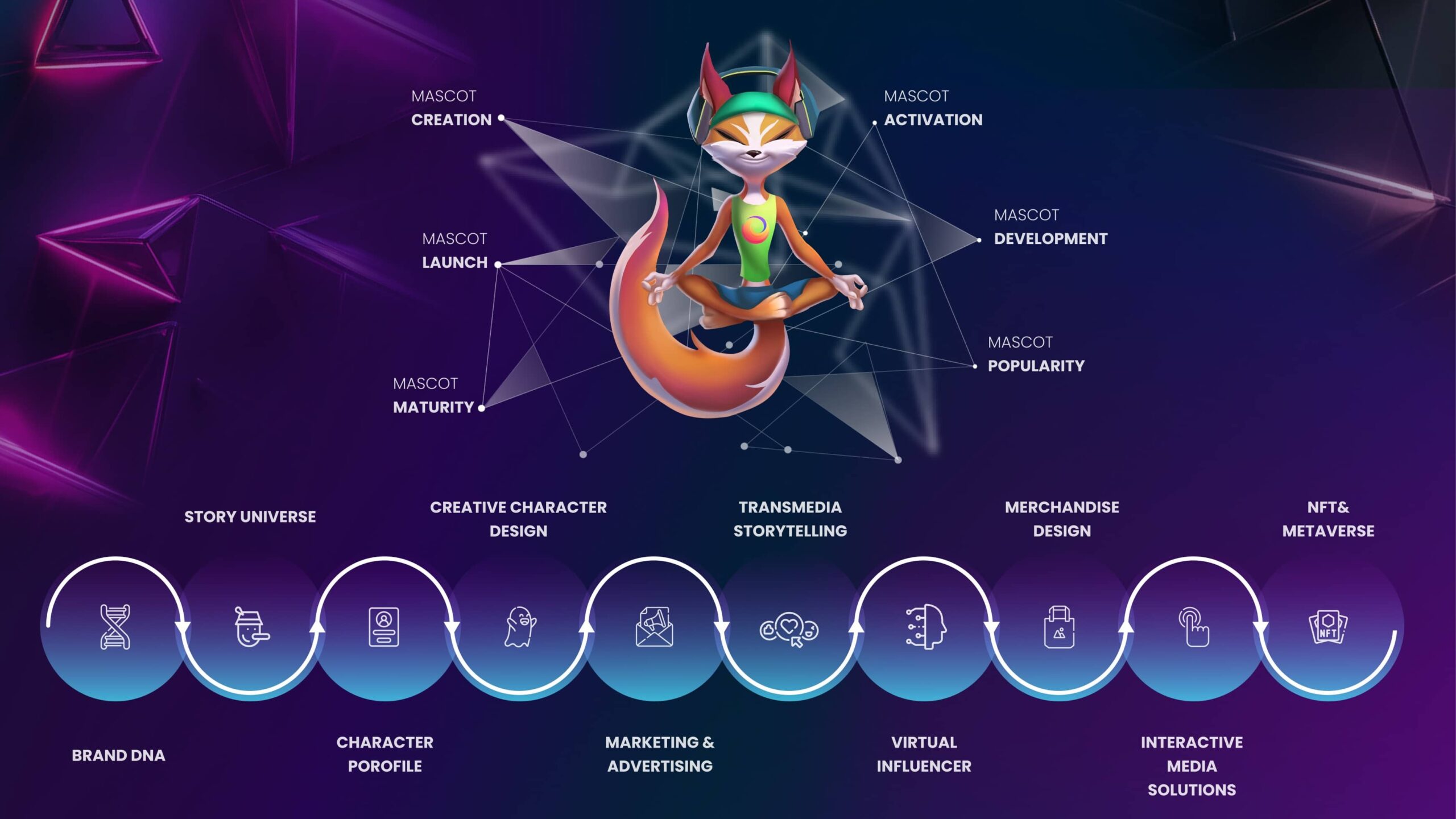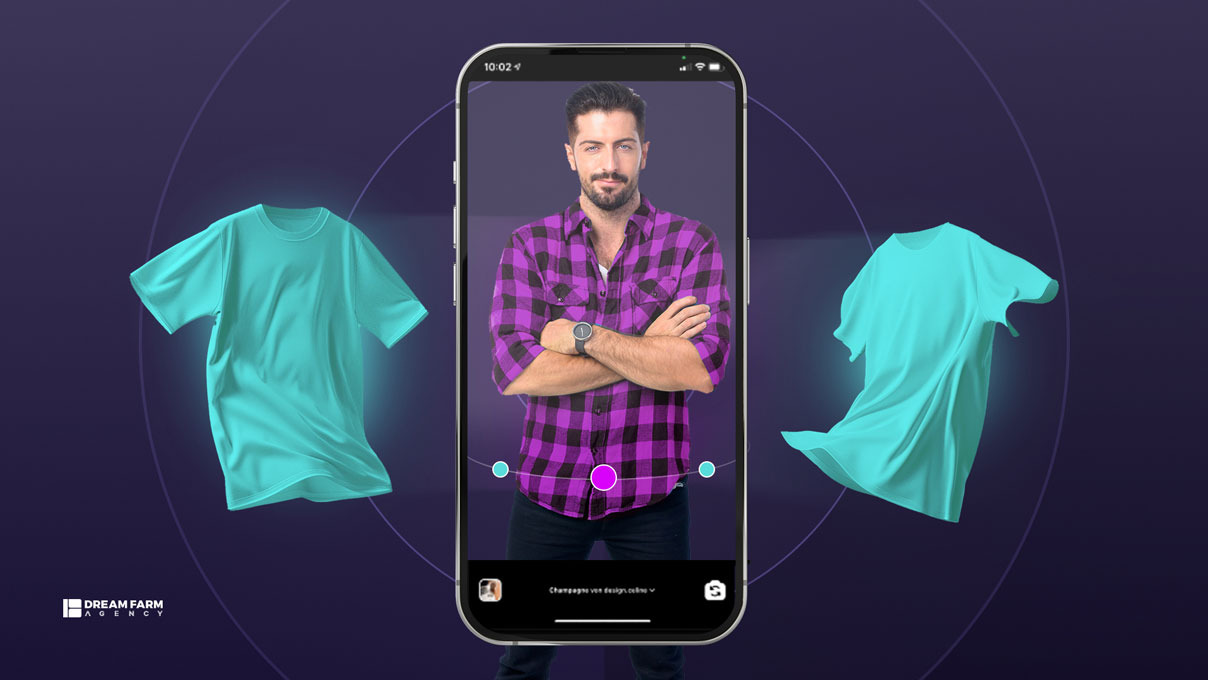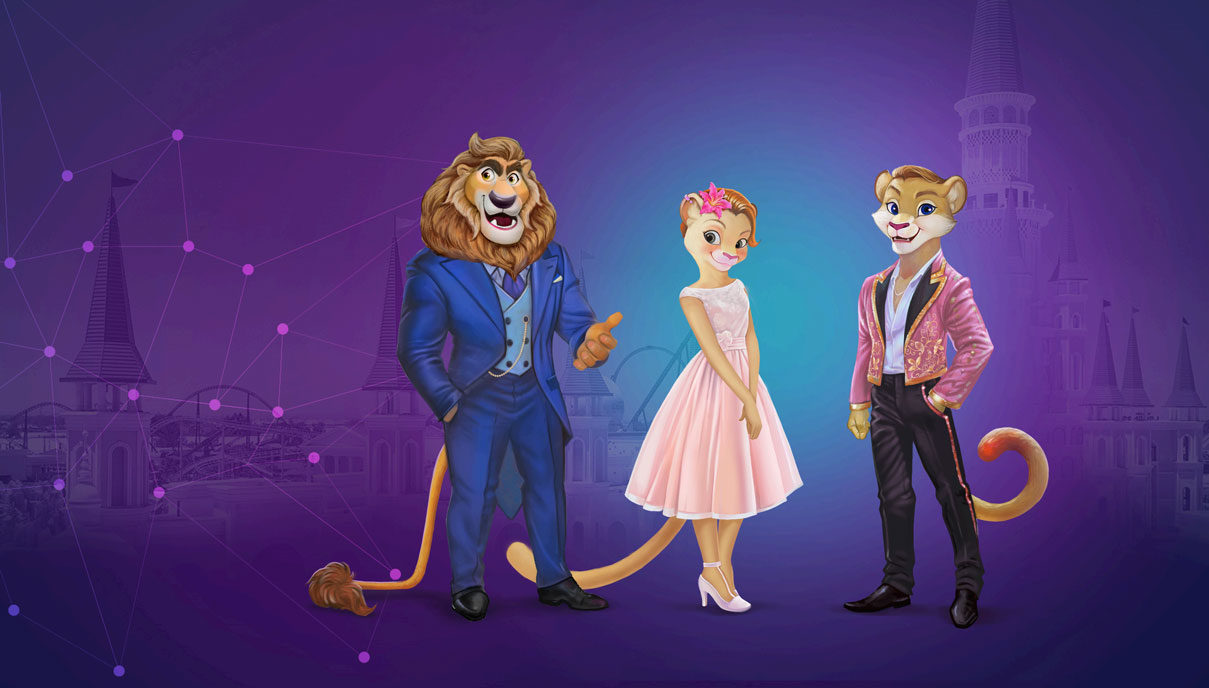In the quest to capture consumer attention and establish a lasting brand presence, many companies turn to the development of mascots.
Mascots, taking the form of illustrated characters, animals, robots, or even objects, serve as more than just cute additions to logos. If well-developed, they can represent a brand’s personality and values on another level, which eventually creates a strong emotional connection with the audience.
This emotional engagement allows brands to communicate complex messages in a simplified yet very engaging manner, making them more relatable to a wider audience. Especially with the rise of AI and digital technology, having a mascot is becoming even more important.
In the current competitive marketplace, a carefully crafted mascot can become a brand’s distinctive voice, and set it apart from the crowd.
The Strategic Depths of Mascot Development vs. Character Design
It’s great that more brands are seeing the value in having a mascot. However, many don’t fully consider what makes a mascot successful. Every day, countless new mascots are created, but many of them end up just being stickers on the wall, forgotten after a short while.
It’s not uncommon for clients to come to us with a spark of inspiration for their potential mascot—a sudden flash of creativity. Sometimes it’s the CEO’s beloved pet or a cute creature spotted by the branding manager on Pinterest! They’re captivated by these initial ideas, convinced they’ve found the perfect representation for their brand.
However, before initiating any mascot-related activity, it’s important to look at the right process of creating a mascot, as there’s more to it than just picking something that looks good; it’s about making sure the mascot fits PERFECTLY & ETERNALLY with what the brand stands for.
For a related read, check out: What happens if the brand personality doesn’t match the brand mascot?
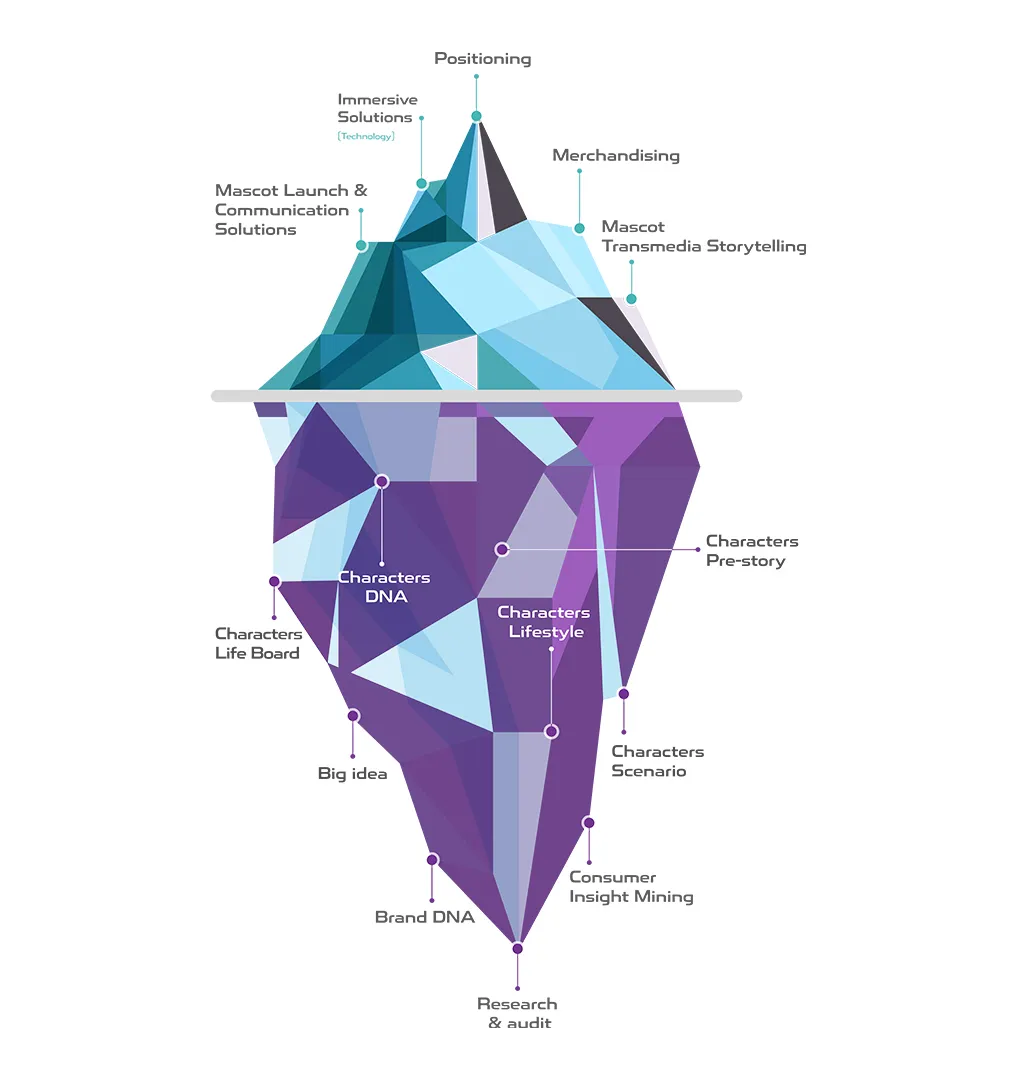
Not Just a Simple Design: The World Behind Mascot Creation

Brands often think getting a mascot is hiring a character designer, asking for a design, and calling it done.
But, this simplified view overlooks the comprehensive and strategic process necessary for successful mascot application.
Beyond just crafting a visually pretty character, effective mascot creation involves aligning the character with the brand’s identity, personality, mission, industry, goals, marketing strategies, and communication channels. Without this foundation, brands may end up with a nice image that fails to represent the values of the brand, diminishing its potential impact and effectiveness.

Within the process of mascot development, the role of a “designer” is specifically focused and does not contain any decision-making regarding the mascot’s fundamental characteristics, such as whether it should be a creature or an animal, its style, shape, or color theme. The designer does not provide input on the potential uses or limitations of the mascot. Instead, their task is limited to creating a visual based on a comprehensive brief that outlines all necessary details about the character.
This brief is prepared to ensure that the designer has a clear understanding of what needs to be visualized, without requiring them to engage in the strategic aspects of the mascot’s development which will be done by a group of creatives and brand strategists.

The selection of the designer itself is heavily influenced by the brief’s requirements. For instance, when creating a mascot intended to engage with an East Asian audience, the choice may not fall on a German character designer, regardless of how professional and reputable they might be.
The importance of cultural familiarity is paramount; the designer must have an understanding of the cultural context of the mascot’s origin and what would be considered appropriate and appealing within that community, to make sure the mascot deeply and appropriately connects with the intended audience.
The Story Behind an Insurance Company Mascot

When we set out to design a mascot for the largest insurance company in the Middle East, the initial step involved a thorough exploration of the company’s identity, mission, and strategic objectives. Given the nature of the insurance industry, it was essential for the mascot to reflect the concepts of financial strength and reliability. The company needed a symbol that conveyed “power,” “supportiveness,” “capability,” and “wealth.” This company, interestingly, also sponsored its own weightlifting and wrestling teams, indicating its robust and competitive spirit.
Their primary clientele was business-to-business (B2B), which meant the mascot also had to carry a “semi-serious” and “authoritative” tone while also embracing “modernity” to distinguish the company from its competitors.
After careful consideration of these factors, we decided on a “Tiger” character, mascot with blue accents from the company’s brand colors, symbolizing strength, speed, and wealth. By designing the tiger with “humanoid” features, we ensured versatility for future digital applications, including animated teasers, potential physical mascot events, and representation of the company’s sports teams.
Now imagine if, instead, the CEO had preferred a rabbit! The result would have been a cute, fluffy rabbit mascot—an image starkly misaligned with the gravitas and objectives of an insurance firm. This scenario highlights the critical need for a thoughtful, comprehensive strategy in mascot development, ensuring that the final character effectively engages the intended demographic.
Goal Without Feet?

On the other hand, when it comes to for example, La’eeb, the mascot for the Qatar World Cup, the lack of fundamental strategy can be obviously seen. When revealed, while some appreciated his youthful charm, others criticized him, likening him to an insubstantial handkerchief or even a ghost! Not all feedback was flattering, with some viewing him as a poor representation of a soccer player, labeling him delusional and erratic.
A World Cup mascot serves multiple roles, as a digital avatar, a physical mascot, and even a wearable character. However, La’eeb’s design, notably his lack of legs, posed significant challenges in creating a practical costume, making it difficult to fulfill the wearable aspect traditionally associated with such mascots. Despite La’eeb’s great personality and big heart, unfortunately, he was not as practical a player as he claimed to be.

Just like mentioned earlier, the King of Qatar directly commissioned a renowned character designer to bring La’eeb to life, skipping the usual teamwork that goes into making mascots. This direct approach resulted in La’eeb’s unique design, which while innovative, presented practical challenges.
Why Dream Farm Chose the Total Solution Path
Due to the nature of our work in animation and character design, Dream Farm frequently encountered inquiries for mascot development projects. The traditional belief that animation studios are ideally suited for creating mascots meant that we often found ourselves at the crossroads of these demands. Over ten years in the animation industry taught us that while these projects were in our wheelhouse, they also revealed a significant gap in the market.
We observed that even the most recognized marketing and communications agencies often lacked critical expertise in visual storytelling and character complexity. While these agencies mastered the art of marketing and strategy, translating these skills into the world of animated characters and visuals seemed to be challenging. This gap showed that there’s a big difference between knowing how to market and understanding how to tell stories with characters and visuals.
This is where we found our special edge. Our initial projects unintentionally led to an organic collaboration between our studio’s creative team and our marketing and strategy experts. This synergy after a while revealed the value of combining these fields, which eventually gave birth to our Brand Mascot design Total Solution approach. By integrating our artistic vision with strategic insight and technological innovation, we recognized that we could offer a uniquely effective service. This integrated approach has become our niche, and we decided to make this our main thing. Now, Dream Farm doesn’t just create great-looking characters. We also make sure they fit perfectly with what the brands’ need, thanks to an A-Z approach that blends creativity, strategy, and tech.

Roadmap to Mascot Development
The brand mascot total solution spans the entire journey from the initial brand research and development phase to designing the mascot, creating mascot-driven content, and strategizing its application across both the physical and digital world, extending even into the metaverse.
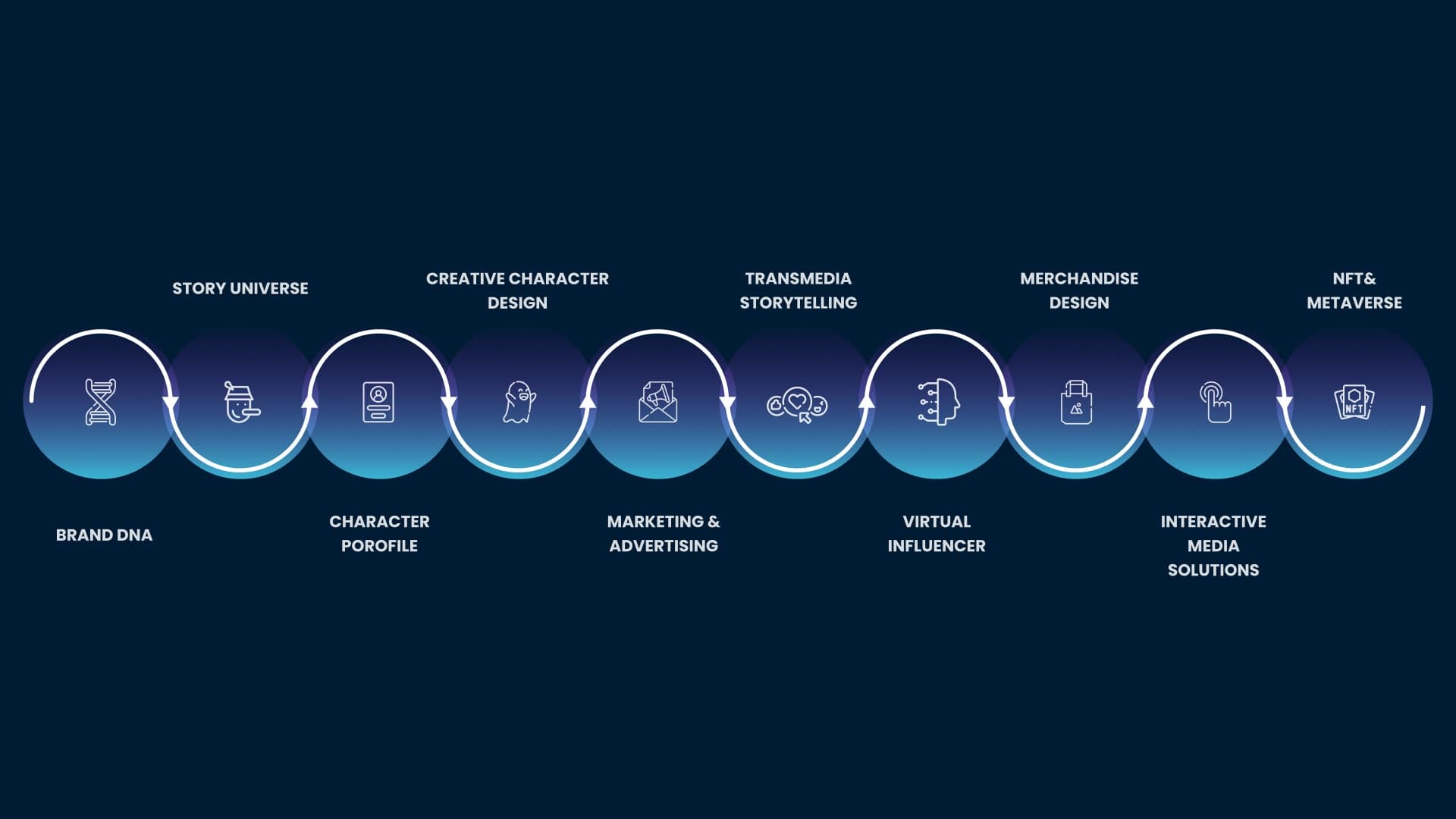
Although we present these phases as a sequential process, the order can always change depending on the industry and specific business goals. For instance, in the case of a theme park mascot, aspects such as interactive media solutions, mascot-based events, and merchandise might take priority, given their significant impact on the theme park’s success. This flexibility ensures meeting the unique needs and priorities of any brand.
Brand DNA
Starting with a deep R&D into the brand itself is a must-do before creating a character that represents it. This first step is all about getting to know the brand really well. It’s like laying down a strong foundation before building a house. During this phase, we figure out what the brand stands for, what makes it special, who it’s trying to reach, and what feelings it wants to stir in its customers. We also look at what other brands are doing and what people like or don’t like.
Knowing all this is super important because it helps make sure that the character we come up with fits the brand perfectly. It’s like making sure the clothes fit just right. If we skip this step, we might end up with a character that doesn’t really show what the brand is all about or connect with people the way we hoped. So, taking the time to really understand the brand first sets the stage for a character that can truly bring the brand’s story to life.
Story Universe
Creating a whole world around a character helps make it more real and easier for people to connect with. Imagine knowing where the character comes from, who its family is, and what it was doing before we met it in the brand’s social media. This background makes the character feel alive and gives it a sense of history and depth.
It’s like when you learn about a new friend’s life story – you understand them better and feel closer to them. It’s about feeling like the character belongs to a world we can imagine and care about, making the audience more attached and interested in what happens to them.
This is also a great opportunity for the brand to mix its core ideas into the character’s world. By adding what the brand believes in and its messages into the character’s journeys and where they happen, the brand gets to share its values in a fun and engaging way, without outright telling people to buy something.
For a related read, check out: The Power Of Backstory And Character Profiles In Brand Mascot Design
Character Profile
Creating a memorable character goes beyond looks; it’s about their personality too. Think about what makes them unique:
- Are they funny or serious?
- Do they speak fast or slow?
- Are they relaxed or particular?
- Does it have human traits or lean more towards the animalistic side?
- Are we envisioning a youthful, teenager-like persona or a more mature, adult character?
- Maybe they even have a special super-power!
These characteristics aren’t random; they should be carefully picked to align with the brand’s identity and appeal directly to the target demographic. Just as friendships in the real world are formed through shared laughter, mutual interests, or a spark of connection, our aim is to develop a similar bond between the mascot and its audience. This is our opportunity to create a personality that everyone loves and wants to be friends with!
Creative Character Design
Once we have all the details about the character neatly outlined in a brief, the exciting design phase begins. We often select multiple designers, sometimes as many as three, for a single project to ensure a variety of creative ideas. This kicks off with several rounds of sketching, during which we closely collaborate with the brand, incorporating their feedback to refine the concepts. After a few iterations, we settle on an approved 2D design. From there, it’s all about adding the final touches and then moving on to the modeling stage. This is where the character truly comes to life, evolving into a fully rigged 3D model complete with a range of facial expressions and diverse poses, resulting in a perfectly crafted character ready to make its mark.
Marketing and Advertising
Along with the final character, we provide a “Mascot Book” or mascot guideline. This essential document covers everything about the character. It maps out the mascot’s purpose within the brand, pinpoints the intended audience, and brings the mascot’s backstory, personality, message, tone, and visual identity to light and to be safe for lasting usages. (Especially ideal for big organizations with frequent changes in marketing and branding teams.)
While working on the mascot enhancement project for Wyndham Hotels & Resorts, specifically the Sleepy Bear for Travelodge, we made an interesting discovery: this mascot has been in existence for over 50 years. Yet, when we were contacted by the current Marketing and Branding Director, who has been with the team for about 6 years, neither she nor any other member of the current team was fully aware of the mascot’s extensive history.
Over the years, Sleepy Bear has been redesigned and repurposed repeatedly, without any guiding documentation. Recognizing this gap, we compiled all the necessary information and created a comprehensive and consistent backstory for Sleepy Bear. We then provided the team with a detailed guide to ensure Sleepy Bear’s legacy would be preserved and respected moving forward.
The guideline lays out the do’s and don’ts for depicting and using the mascot, setting clear boundaries to preserve its identity. It discusses the mascot’s limitations, suitable promotional channels, and strategies for impactful communication.

By equipping with this guide, the brand can have a vision for the mascot’s journey. A critical milestone in a mascot’s life cycle is the mascot “launch“, in which we will provide the brand with customized strategic solutions designed to embed our mascot in the hearts and minds of the audience. A solid long-term plan will also ensure the mascot not only makes a strong initial impact but also remains memorable and effective over time.
Transmedia Storytelling
Transmedia storytelling brings a single story to life across various platforms and formats, making the most of today’s digital tools. With mascots, this storytelling becomes even more captivating because there’s a real character at the heart of the tales.
Merchandise, Interactive Media Solutions, NFT & Metaverse
Once your brand mascot becomes popular with your audience, it opens up a world of opportunities, from directly selling your product and service to realizing your merchandising ambitions. We craft your character with these goals in mind, ensuring future success in the marketplace.
To make your mascot even more engaging, we utilize immersive, tech-based solutions, bringing your character to life in a digital environment. Through gamification solutions and thanks to technologies such as AR, VR, and AI, we significantly boost customer engagement.
NFT collections, including a wide range of 2D or 3D characters, backgrounds, and accessories, are another way of utilizing the mascot in the digital world.
Furthermore, your mascot serves as the ideal ambassador for venturing into the metaverse, providing a humanized representation of your brand.
There are countless more opportunities and even more on the horizon, thanks to the rapid pace of the digital world.
And what better tool to leverage these possibilities than a mascot?

Behind the Scenes with Multidisciplinary Teams

As mentioned earlier, mascot creation is a collaborative work that extends far beyond the role of a single character designer. In a specialized mascot agency, the development process involves continuous collaboration among several teams, including:
- Business & Strategy Team
- Brand Research & Development Team
- Art Direction & Creative Design Team
- Character Design and Production Team
- Marketing & Communication Team

Given that many of the activities may overlap, all these teams must be fully aware of the entire process and work closely together.
Before diving into brand identity and creative and technical details, it’s essential to first understand and evaluate the business aspects of the brand.
Questions such as their business model, the product or service they offer, their industry, and whether they operate on a business-to-business (B2B) or business-to-consumer (B2C) basis need to be addressed.
Most importantly, how do they generate revenue?
Taking the insurance industry as an example: an insurance company essentially trades in risk – they take on the risk from their clients in exchange for providing assurance and support. Although this service is intangible, it’s vitally important for customers.
Understanding the nature of their product, we can then understand how the mascot can be leveraged: to make this intangible service tangible and easily understandable to people. Just like how Geico, a leading insurance company, uses its mascot to effectively communicate with its audience. This strategy not only simplifies the concept of insurance but also makes the brand more relatable and memorable to consumers.
Leveraging the Mascot for Storytelling
Think about it: do you buy a washing machine simply because it cleans clothes, or do you buy the promise of a cleaner, more efficient home life? Do you choose a particular brand of sneakers because of their technical specifications, or because they represent a certain image or lifestyle?
People don’t buy products.
They buy stories.
While features and functionality are important, people are often drawn to the stories that accompany products. These stories can evoke emotions, aspirations, and a sense of connection, making the product more than just a collection of materials and functions.
Now, the key to making a brand truly shine isn’t just in having mascots;
it’s in how they can be used to tell stories.
Brand mascots have the unique power to transform brand storytelling, simplifying complex messages, and making even the driest information fun and relatable.
They offer consistency across various marketing platforms, from social media and websites to advertisements, events and packaging. This consistent presence helps in building brand recognition and loyalty.
For example, a mascot can star in a series of stories or adventures that highlight different aspects of the brand, such as its commitment to quality, its history, or how its products or services can solve problems.
Picture this, starting with mysterious hints about the mascot on social media, leading to a big reveal on the brand’s website, inviting the audience to join the YouTube channel for a surprise. Next, an animated series on YouTube would introduce the mascot’s backstory, followed by a game with each level cleverly revealing clues about a forthcoming physical event featuring the mascot. This approach keeps the audience hooked across different channels, eagerly awaiting what comes next.

Moreover, a well-designed mascot can cross cultural and linguistic barriers, appealing to a global audience. It can embody universal values and emotions, making the brand’s story accessible to people from different backgrounds.
In the digital age, mascots can also interact with the audience in real-time on social media, as brand virtual influencers, providing a dynamic and engaging way to participate in conversations, celebrate milestones, and respond to current events, all while reinforcing the brand’s identity and values.
Conclusion
If you’ve ever considered introducing a mascot for your brand, it’s crucial to approach the process with care and strategy. Given the initial investment and costs involved in developing a character, making the most of this opportunity is essential, rather than risking failure through a hasty and unplanned approach.
Surprisingly, only 25% of brands utilize their characters on platforms like Facebook, with even fewer, 21%, doing so on Twitter. This underutilization overlooks the huge potential of mascots, especially when famous research indicates that long-term campaigns featuring characters can boost profit gains by 34.1% and attract 40.9% more new customers. Brand mascots and characters have the power to increase profits and deepen emotional connections with customers by up to 41%.
Therefore, investing in a mascot is not just about adding a fun element to your brand; it’s about strategically leveraging a powerful tool to improve brand visibility, customer loyalty, and ultimately, profitability.
